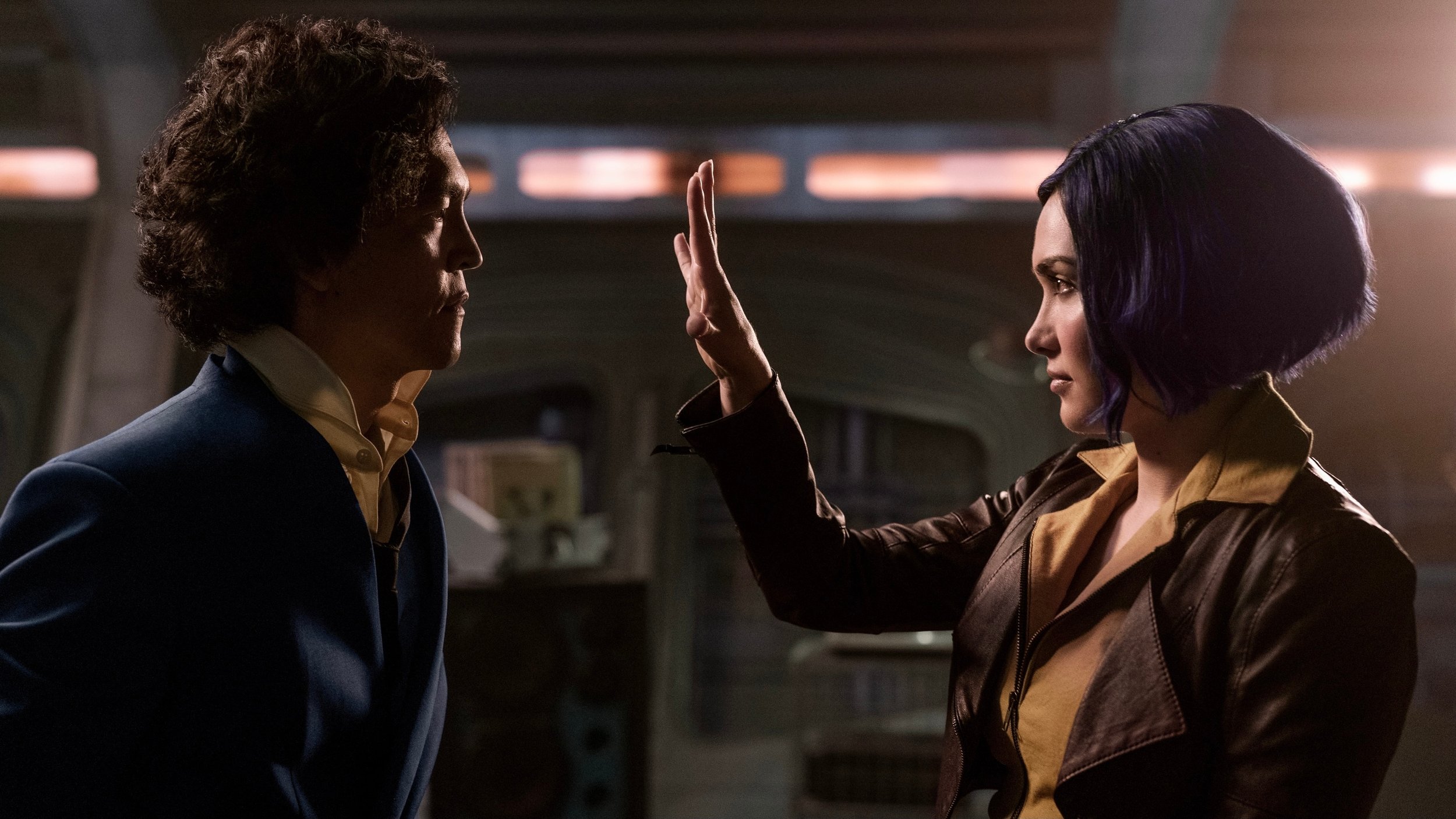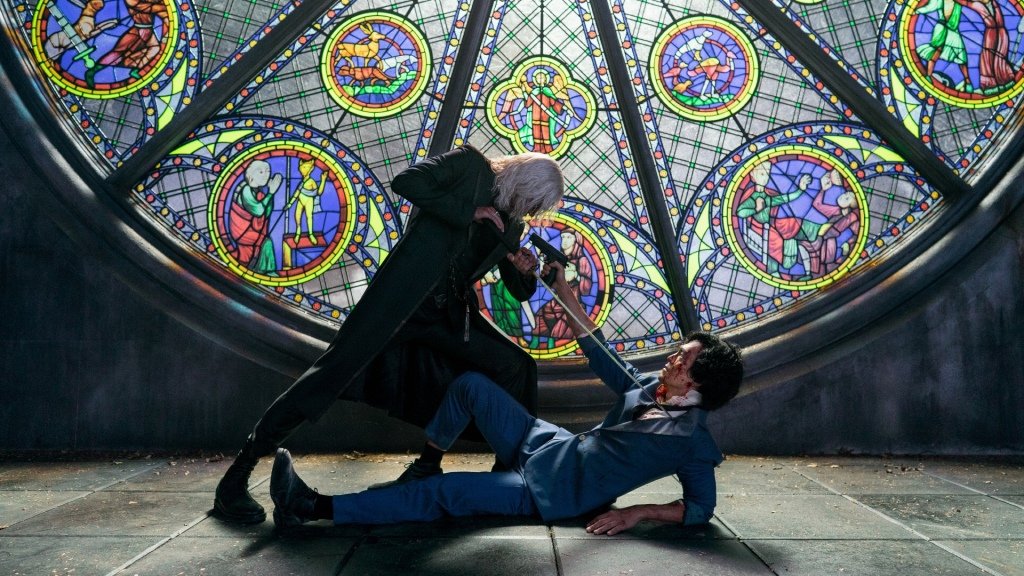'Cowboy Bebop' - Season 1 Review
Despite their best efforts, Netflix proves that you just can’t manufacture cool.
WARNING: CONTAINS SPOILERS
The world of classic anime is overstuffed with Bubblegum J-pop and high-octane Rock n’ Roll. Cowboy Bebop managed to cut through the excess by being uniquely Dixieland Jazz. The funky beats and cool riffs flow with sudden tempo changes thrown in at the exact moment of inspiration without hesitation. Each song is unique due to the heavy improvisation which causes replication of those songs to be notoriously difficult. This is the problem Netflix has run into with its live-action adaptation of the Anime classic. It is not from lack of trying, though. They brought in the original creator Shinichirō Watanabe as a consultant to help series creator Christopher L. Yost and showrunner Andre Nemec recreate look of neo-noir space opera and hired original composer Yoko Kanno to bring her legendary music directly to the adaptation. In fact, Netflix has gone to great lengths to convey to the prospective audience that this is exactly the show you remember but with an added dimension. The Costumes, production design and even opening credits were painstakingly recreated aside from a very few, much needed, exceptions. But despite all this, the adaptation cannot put it all together. To put it simply, a square wearing a zoot suit is still a square.
The core cast of John Cho, Mustafa Shakir, and Daniella Pineda are all fantastic with the material they are given. Cho channels bounty hunter with a checkered past Spike Spiegel’s charming yet tormented and perpetually “hangry” irritability so well that highlights the absolute tragedy it is that this is one of his only leading roles. He is a tad bit more expressive and excitable than his anime counterpart but that has more to do with how expensive anime is rather than a conscious omission. Shakir’s ex-cop turned captain Jet Black might as well be ripped straight from the anime. Shakir brings full-on exasperated, schlubby dad-energy to the role like Hopper from Stranger Things just as successfully. Daniella Pineda may be the series stand out as the amnestic con-woman Faye Valentine. Pineda Takes the roll and makes it her own while staying true to the source material. Her foul-mouthed Faye brings a much-needed contrast to Jet’s straight-man and Spike’s man-child. As far as the other two crew members of the Bebop; Ein is an adorable Corgi and judging from the few moments we have with Radical Edward, played by Eden Perkins, she is just as annoying as she was in the Anime. So, count those both as a success.
The problems with the characters start once you widen away from main crew. Both the villain and love interest of the series undergo radical character changes that will be sure to rub the die-hard fans the wrong way. Playing the villain known only as Vicious is Alex Hassell. Admittedly, there was not much depth to the original character but that is because he is very sparingly. Viscous was used similarly to the Great White Shark in Jaws, creating an intimidating mystique built off brief glimpses and allusions until we are given the full introduction towards the second half of the series. Even as basic as Vicious was, he remained a memorable and intimidating villain. Hassell’s Vicious is all over the place in terms of characterization. He ranges from insecure Saturday-morning-cartoonish maniacal villain to a manic-depressive coach’s son, neither of which are very intimidating. As for Spike’s love interest Julia played by Elena Satine, her character for most of the series is a blank slate with very little defining characteristics besides a general naivety. But in the season finale, the character does a complete 180 that not only changes the core character as she was in the source-material, but it also changes the entire motivation for Spike and the direction of the overarching story which will be explained more in-depth later in this review. Both characters had their roles in the series massively expanded to pad out the hour long run times. What was meant to add depth to these characters did nothing more than inject mind numbing and often cliched melo-drama and certainly alienate the original audience. The “bounties of the week” are relatively inoffensive with a few stand outs, most notably Josh Randall’s delightfully psychopathic Pierrot Le Fou and evil Martha Stewart, Whitney Matsumoto played by Christine Dunford. One problem that kept coming up was that a few characters meant for one-off appearances were more memorable than several re-occurring characters. In one episode, Maaka Pohatu who is best known from the underrated show Wellington Paranormal, makes a one-off appearance as a black-market toy dealer who is more memorable than Spike’s confidant Ana played by Tamara Tunie who appears in six episodes.
The writing in the series is a bit of a letdown. Because of the extra padding needed to fill-out the run time, there are a lot of added scenes and new story beats. Inherently, the addition of these scenes is not a bad thing, it is the fact that most of these moments seem out of place in contrast to the rest of the show. The opening scene itself feels like it was written originally for a superhero movie and is in stark contrast to the old school neo-noir that follows. There are a lot of forced character moments written into the script. More than a few times Spike and Jet bicker like an old married couple which feels tired and cliché. It is a shame too because those moments are not needed. Cho and Shakir do more with subtle actor moments during the quiet times aboard the Bebop to solidify their friendship than all their added bickering, and once Faye is thrown into the mix, the chemistry of all three is palpable.
As true to the source that most of the episodes try to be, there are more than a few odd changes to story narratives for seemingly no reason. For example, in episode one the bounty is a couple who stole a large amount of space-narcotic called Red-Eye. The story arch from the anime follows Katarina who starts as woman in over her head and clinging on to a toxic relationship out of a desperate hope of a better life and ends with her realizing the toxicity of her relationship and her impending death, so she decides to empower herself and put down her deranged lover just before her own inevitable death. Instead, in the adaptation, she clings onto the toxic relationship to the point of suicide, removing any actual arc from Katarina. But what will be the most polarizing is how they ended the season. In the final episode, Vicious and Spike have their showdown, pulled from an early episode of the anime. Instead of them reaching a stalemate leaving their final showdown for the series finale, Julia is present. She wounds Vicious herself and even though she was described as being happy with Vicious she blames Spike for leaving her with him, even though he was under the impression that she chose Vicious. She decides to take over the Syndicate and become the new big bad villain of the series and shoots spike through a stained-glass window. They change her core values and the ultimate arc of the Spike. It would be one thing if they built towards this but up until the end Julia was presented as meek, naïve, and otherwise helpless. Her change comes out of nowhere and feels extremely forced. Overall, the original series is about Spike accepting his past and redeeming himself for the sins of his past by ridding the world of Vicious, but without Julia’s demise to motivate him into redemption and her complete turn against him, any involvement with the Syndicate would come off as jealousy, pettiness or desperate… not exactly traits of a protagonist.
Aside from the characters and story, the most cringe-inducing aspect of the series is the attempt at making the series “cool” with its cinematography and editing. Apparently, the creators thought that the secret to making a stylized show would be Dutch angles. There are an insulting number of Dutch angles in the show. Roughly eighthly percent of shots are crooked and low rendering any benefit of using Dutch angles moot. The lighting of show is nowhere near contrasting enough for a show in the genre of noir and with the “western” filter cranked all the way up, they combine for generically nasty looking and muted color pallet. Yoko Kanno is an expert composer and is no less responsible for the success of the anime than Shinichirō Watanabe himself. Her score needed to be brought to the fore-front but is instead muted during most scenes as well as being buried by mixing and as good as the score is, the Anime knew when to use it and when to leave it silent which was quite often. Considering how accurate the production design is to the source, the creators had all the pieces in place to recreate the feeling of the anime but had little to no clue how to use them.
Christopher L. Yost and Andre Nemec have a history of Superhero and Action titles in their filmography, nothing near the neo-noir space opera western they were charged with creating. That fact becomes glaringly obvious as the series goes along. Not all is bad. Every aspect taken directly from the Anime works and works well. The cast are genuinely enjoyable and put in particularly good performances within the material they were given and again the score Yoko Kanno’s music is amazing and somewhat unique in today’s zeitgeist. Which makes the outcome of the series even more disappointing. The effort is obvious but recreating the magic of the series seemed a bit out of their depth. All that being said, there was enough to enjoy to make a second season somewhat intriguing if not worrisome. Netflix has yet to officially greenlight a second season as of writing this so only time will tell where this series leads if anywhere. So, until then… see you, space cowboy.





